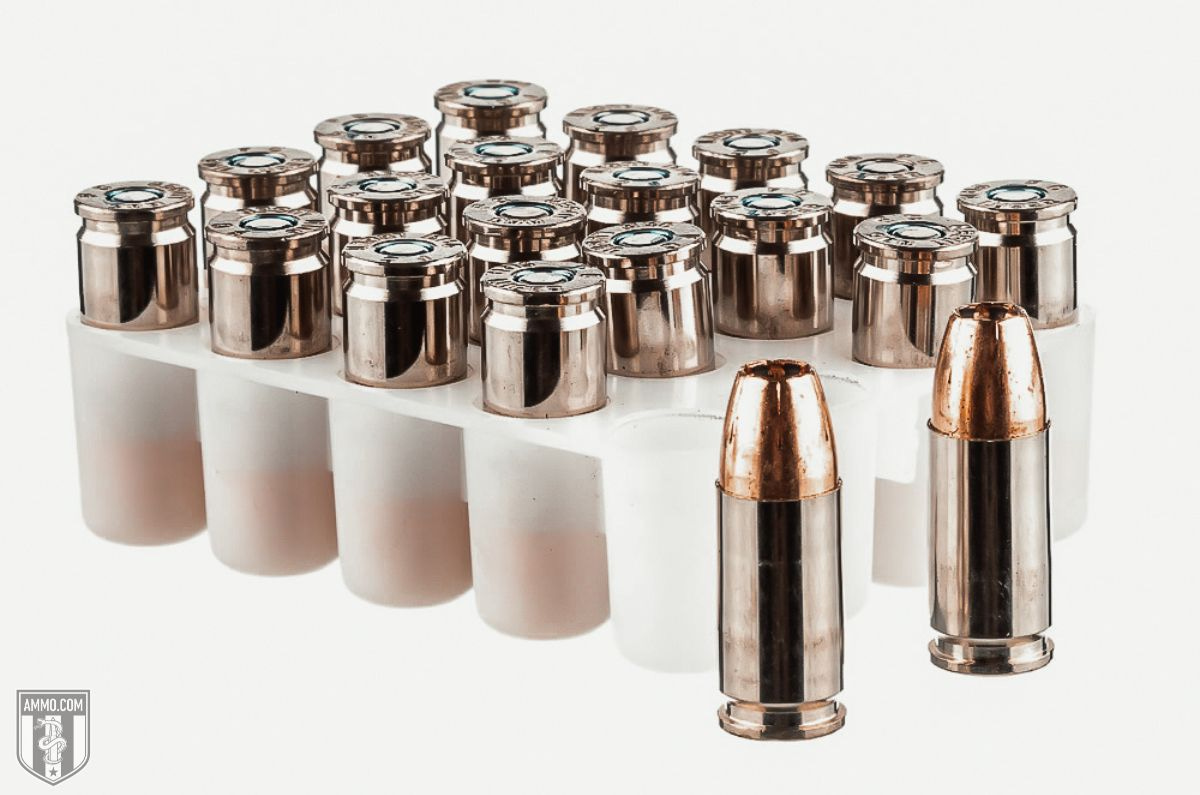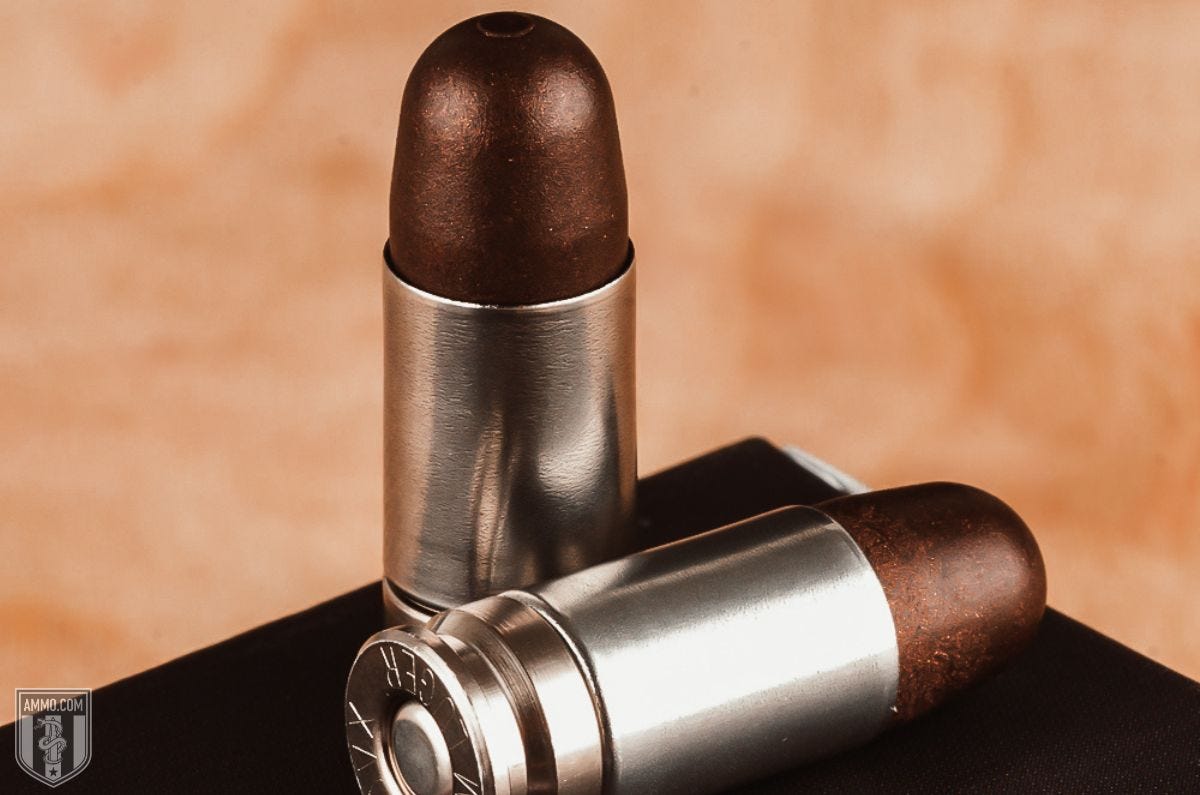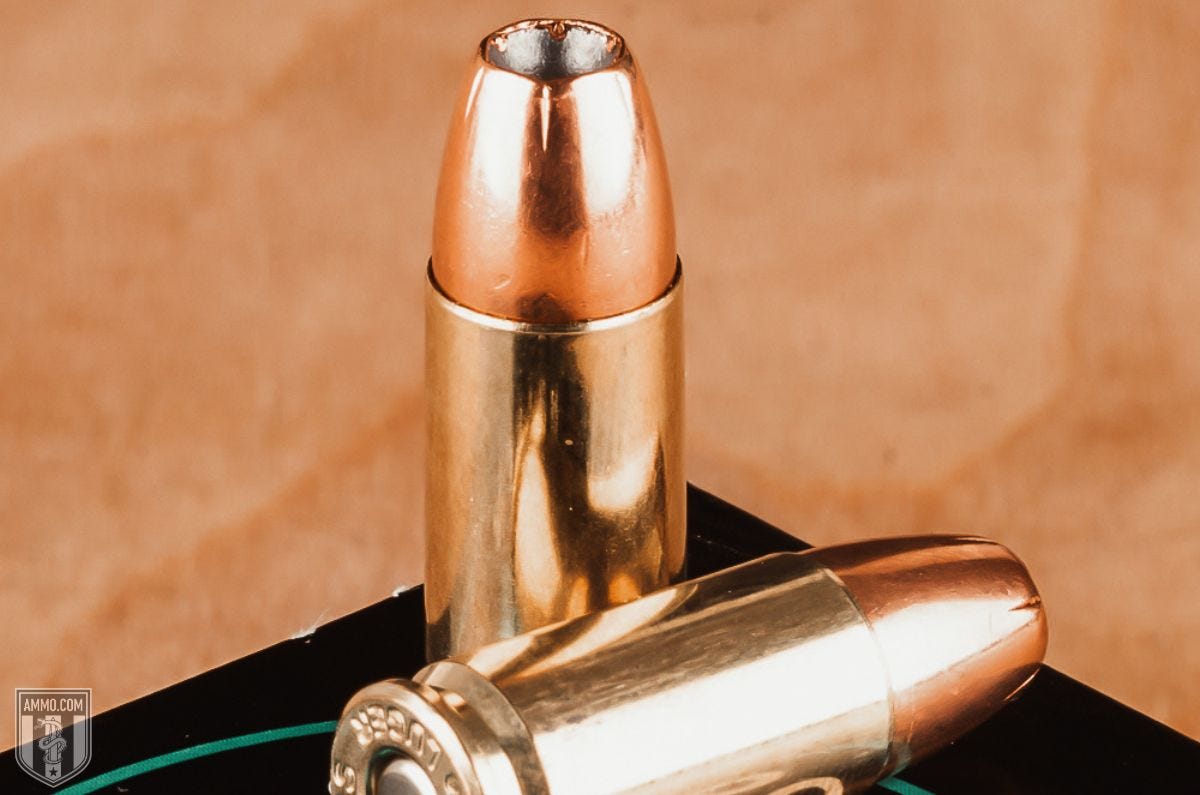9mm Makarov vs 9mm Luger: The 9mm Cartridge Cold War
9mm Makarov vs 9mm Luger: The 9mm Cartridge Cold War
When it comes to East vs West pistol cartridges, it’s hard to ignore comparing the 9x19mm Luger and 9x18mm Makarov. Each round found itself on the opposite side of the Iron Curtain in the Cold War during the latter half of the 20th Century, with the Luger being on the side of NATO and the Makarov being the handgun cartridge choice of the Soviet Union.
Although these two 9mm rounds might look incredibly similar when you stand them side-by-side, the 9mm Luger is superior to the 9mm Makarov in all ballistic categories.
The ballistic superiority of the Luger cartridge causes some new shooters to wonder if the 9mm Makarov round is obsolete or if the round has some redeeming qualities? Is it worth it to pick up a Makarov pistol or should you just stick with a run of the mill 9mm NATO?
In this article, we will evaluate the 9x18 vs 9x19 to help you understand the differences between the two and give you a clearer understanding of which cartridge is best for your shooting needs.
What’s the difference between 9mm Makarov and 9mm Luger?
The difference between 9mm Makarov and 9mm Luger is that the 9mm Luger has a higher case capacity and is superior to the Makarov round in all ballistic categories. Furthermore, the 9x18mm Makarov typically fires lighter 95 grain bullets that have a slightly larger diameter compared to the heavier 115-147 grain bullets fired by the 9mm NATO.
Cartridge Specs
When evaluating centerfire cartridges, it’s a good idea to analyze the cartridge specs to gain more knowledge of each.
The 9x19mm Luger is the most popular centerfire submachine gun and pistol cartridge in the world and was developed in 1901 by Georg Luger. Luger used his previous design, the 7.62x21mm Parabellum as the parent case for his new creation.
The 9mm Luger is the official name for the cartridge per SAAMI and the CIP, however it is also known as 9mm NATO, 9x19mm Parabellum, or simply 9mm.
In 1903, Georg Luger presented the 9mm Parabellum to the US military for consideration at the Springfield Arsenal and was in competition with John Moses Browning and the 45 ACP. The 9mm was not adopted by the US military until much later and was instead picked up by the German Imperial Navy and Army in 1904 and 1908, respectively.
In contrast, the 9x18mm Makarov was developed in the early phases of the Cold War to replace the 7.62x25mm Tokarev and its accompanying TT-35 pistol. This handgun had a bad tendency to have its magazine drop during firing and the Soviets wanted a direct blowback, fixed-barrel handgun design for accuracy and reliability.
Boris Semin developed the 9mm Makarov pistol cartridge in 1946 off the German Luftwaffe 9x18mm Ultra cartridge as it was more powerful than the 9x17mm (380 ACP) round used in the Walther PP.
In 1947, Nikolay Makarov developed the Makarov PM pistol using the 9x18mm round. In 1951, the Makarov PM handgun and 9x18mm cartridge were accepted by the Soviets and the Makarov name was added to the cartridge name.
Perhaps the biggest difference between the 9x18mm Makarov and the 9mm Luger is the bullet diameter each pistol cartridge fires. Although both rounds carry the 9mm designation, the 9mm Luger fires a 0.355” diameter bullet while the Russian Makarov round fires a larger diameter bullet at 0.365”.
The reason for the difference is due to the Russians using an older method for measuring bore diameter, which is to measure the distance across the lands of the rifling. American and NATO cartridge regulatory agencies uses the newer method, which is to measure across the grooves. Therefore, the Russian ammunition requires a slightly wider bullet.
There are some who theorize that the former Soviet Union did this on purpose to prevent potential enemies (primarily the Germans at that point in time) from using their ammo in Russian firearms.
As the 9mm Luger case length is 19.15mm or 0.754” it will not fit into the chamber of a Makarov pistol since the case length is measured at 18.10mm or 0.713”. Furthermore, if it were even possible to close the chamber of a 9mm Mak pistol on a Luger round (it’s not possible), the bullet would not engage the rifling properly and would be horribly inaccurate.
The overall length of the 9mm Luger is also larger than the Makarov round, measuring 1.169” vs 0.984” respectively.
In terms of bullet weight, the 9mm Luger typically fires 115, 124, and 147 grain bullets while the 9mm Makarov is typically loaded with 95 grain bullets.
With a longer case, the 9mm Luger has a higher case capacity than the 9x18mm Makarov. The case capacity for the Luger is measured at 13.3 gr compared to 12.8 gr for the Makarov.
As such, the maximum pressure for the 9mm Luger is considerably higher at 35,000 psi per SAAMI specs compared to 23,500 psi for the 9mm Makarov.
This difference is an excellent example of the handgun design considerations for both pistol cartridges. The 9mm Makarov was specifically designed for a blowback recoil system and is considered by many shooters as the most powerful cartridge to use in this design.
On the other hand, your typical 9mm pistol like a Glock 17 or Sig Sauer P320 uses a locked breech design that can handle higher pressures.
Recoil
Recoil is an important consideration when purchasing a new handgun as a round with heavy recoil will be more difficult to control and will slow your rate of follow up shots. The potential for flinching is also an issue for cartridges with heavy recoil.
Felt recoil will differ from shooter to shooter and is often dependent on firearm choice, stance, and your chosen factory ammo or handloads. However, free recoil is a more objective measure of how hard a cartridge hits based on firearm weight, muzzle velocity, powder charge, and bullet weight.
Both 9mm rounds are known for having incredibly low recoil, however the 9mm Makarov will have slightly less free recoil.
For this comparison we will compare two popular practice loads for each cartridge. For the 9mm Luger we will consider the Winchester white box 115 gr full metal jacket (FMJ) factory load traveling at 1,190 fps and Fiocchi 95 gr FMJ’s traveling at 1,020 fps for the 9x18mm Makarov.
The handguns selected for this comparison will be the Glock 45 weighing 2 lbs loaded and the Makarov PM weighing 1.5 lbs.
Given these criteria, the 9mm Luger will have a free recoil of 4 ft-lbs compared to 3 ft-lbs for the 9mm Makarov.
Clearly the 9mm Makarov has lower free recoil, but many shooters report the Makarov as having more felt recoil than the 9mm Luger. Why is that?
Although the Makarov round has less free recoil, it is the pistol design itself that causes this difference in felt recoil.
A blowback pistol is extremely economical and simple to manufacture, however the recoil spring is the only thing holding the barrel in battery. As such, when the weapon is fired, the recoil spring is the only mechanism that is available to mitigate recoil. Therefore, all the recoil is sent back towards the shooter, creating the perception that the Makarov has higher recoil.
In contrast, the 9mm Luger (although capable of being used in a blowback recoil system) is typically only chambered in locked breech designs. This design allows for recoil mitigation systems to be implemented and creates the perception that the 9mm Luger has less felt recoil.
Muzzle Velocity, Kinetic Energy, and Trajectory
Thanks to its higher case capacity, the 9mm Luger is superior to the 9mm Makarov in every ballistic category.
To validate this thesis, we will compare two different factory loads from each cartridge and analyze their ballistic performance.
For 9mm Makarov ammunition we will consider the Fiocchi 95 gr FMJ and Hornady Critical Defense 95 gr FTX jacketed hollow point (JHP). For 9x19mm Parabellum we will consider the Winchester 115 gr FMJ and Sig Sauer V-Crown 124 gr JHP self-defense ammo.
Continue reading 9mm Makarov vs 9mm Luger: The 9mm Cartridge Cold War at Ammo.com.







